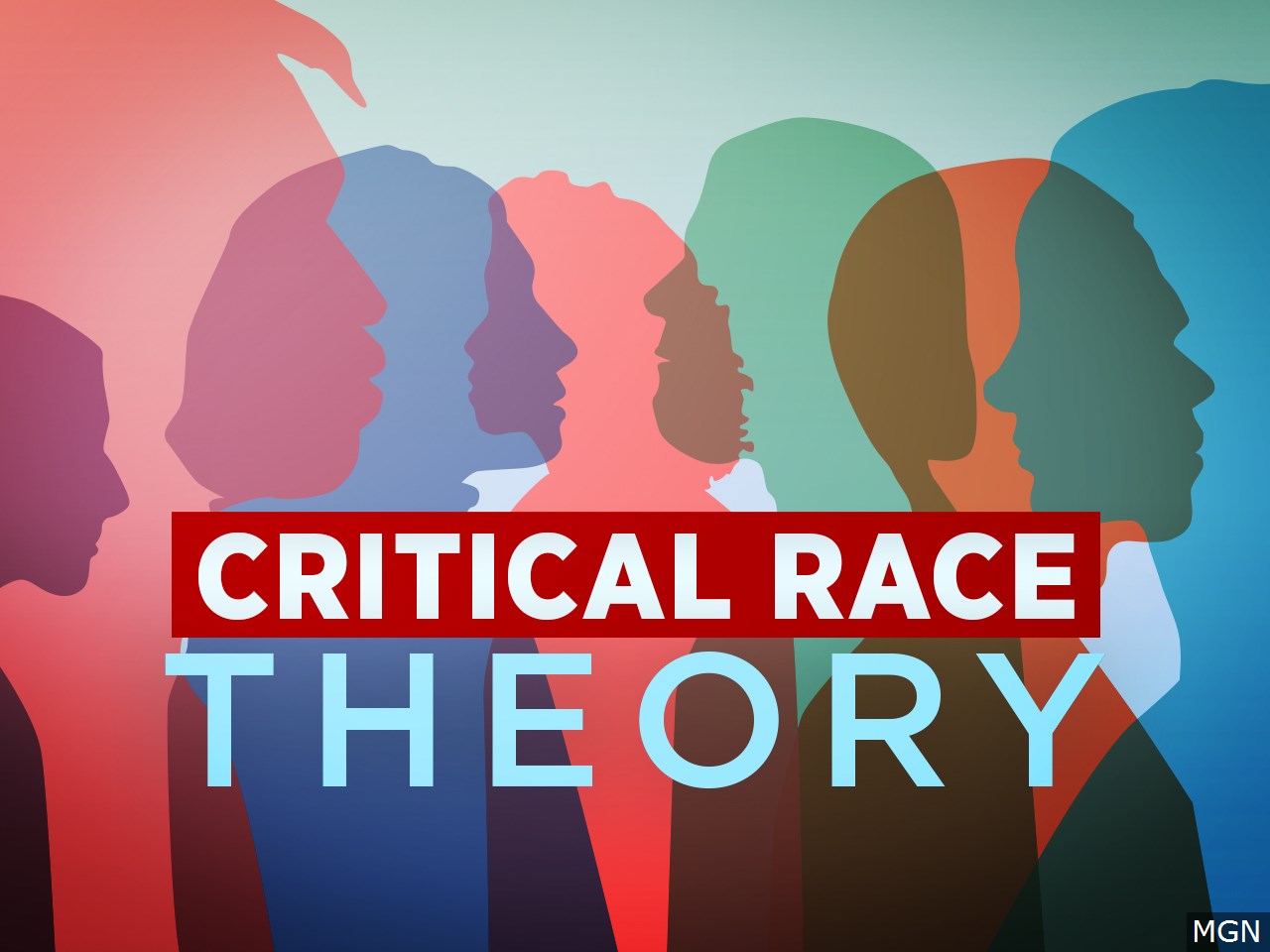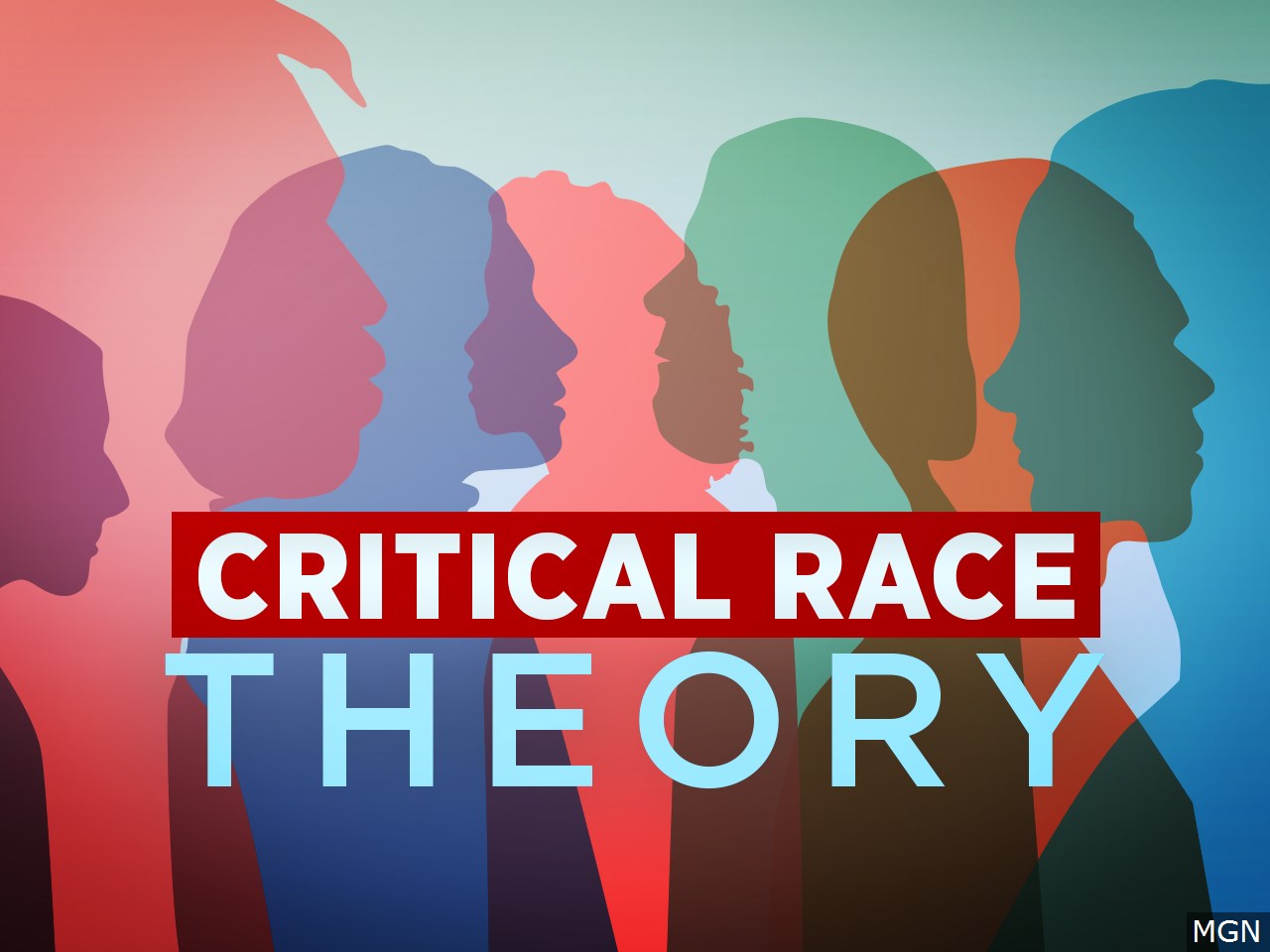

In waging its ever-escalating campaign to unravel our culture and cherished traditions, one of the left elite’s go-to maneuvers has been to dissimulate the actual content and use of the texts and ideas that animate its movement. This has been painfully obvious in the pushback against the exposure of critical race theory by Christopher Rufo and others on the center-right. Seeking to take advantage of the general population’s ignorance about what critical race theory really is and how its teachings have seeped out into K-12 and college education, academics have sought to portray CRT as an abstruse doctrine taught primarily in law schools. Mainstream journalists, most of whom don’t know any better, have uncritically parroted such disinformation, while absurdly contending conservatives are just trying to silence the teaching of truths about slavery and racism. The fact of the matter, however, is that left-wing elites have every interest in concealing from the populace the content of many of the core texts constituting the kind of education they champion. Critical race theory is only a part of that picture. The far bigger fish that needs to be thrown back into the polluted stream from which it came is known as “critical pedagogy.”
What is “critical pedagogy”? When you hear the “critical” modifier, as in “critical race theory,” “critical legal studies,” or “critical gender studies,” you can be fairly sure its ultimate roots are in “critical theory.” Critical theory refers to the mid-20th century movement to study why a workers’ revolution along the lines Marx predicted had not yet materialized throughout the industrialized societies of the capitalist West, which had been expected to fall like dominoes after the 1917 Russian Revolution and the civilizational cataclysm of World War I. Also known as “Cultural Marxism,” this movement, which I have described at greater length here—composed of such thinkers as Theodor Adorno, Max Horkheimer, Erich Fromm and the notorious 60s radical and father of the American New Left, Herbert Marcuse—built upon the work of the Hungarian Marxist Georg Lukács and the Italian Marxist Antonio Gramsci to propose that because, contra Marx, much of the proletariat had been successfully entranced by capitalism and the creature comforts and cheap-thrill entertainments (rather than Marxian “immiseration”) it enabled, radicals had to bide their time and plant seeds by taking over elite institutions, using them as platforms to “raise” the consciousness of the working class. Later, in 1967, Marcuse argued expressly that because the white working class was a lost cause for the socialist left, the groundwork for the revolution had to be laid by co-opting “outsiders within the established order,” namely, the “underprivileged” “in the ghettoes” and those “at the opposite pole of society,” among our socio-cultural elites. That blueprint has been followed to the letter, and the institutional and cultural takeover these Frankfurt School fanatics envisioned has succeeded beyond their wildest dreams.
The explicitly educational branch of the “critical theory” movement, known as “critical pedagogy,” “views teaching,” in the words of Henry A. Giroux, one of its leading lights, “as an inherently political act,” that “reject[s] the neutrality of knowledge, and insist[s] that issues of social justice and democracy itself are not distinct from acts of teaching and learning.” As Wikipedia, echoing Giroux himself, tells us, critical pedagogy was “founded by the Brazilian philosopher and educator Paulo Freire, who promoted it through his 1968 book, Pedagogy of the Oppressed.”
Though you may be hearing of it for the first time here, Freire’s Pedagogy of the Oppressed is no obscure tract. It is, rather, a central text in many American graduate schools of education, the institutions—however academically non-rigorous and anti-intellectual they may generally be — where most teachers get credentialed. I first heard about the book and Freire—a Brazilian Marxist and municipal Secretary of Education in São Paulo during the late 1980s and early ’90s —from a 2009 City Journal article by ex-radical Sol Stern. Pedagogy of the Oppressed, Stern explained, “was one of the most frequently assigned texts” in philosophy of education courses, having achieved “near-iconic status,” and was required reading for many first-year teaching fellows.
Freire’s influence has not been confined to the realm of theory. Already, back in 1986, a New York Times report on Freire’s tour of America to conduct workshops and seminars at American universities, observed that “Mr. Freire’s methods have been adapted in the United States by feminist, Hispanic and black groups that operate adult literacy programs or train teachers,” even while also mentioning the complaints of Freire’s critics within the Reagan Administration that “Mr. Freire’s emphasis on the practical has been taken to an absurd extreme in Nicaragua, where second graders count not apples or oranges but hand grenades and rifles to learn arithmetic.”
A decade later, Freire’s 1997 New York Times obituary quoted John Devine, then-director of the School Partnership Program at New York University, a collaborative venture between that university and inner-city high schools in New York: “We place gr[a]duate students into inner city schools where we try to exemplify some of Paulo Freire’s principles.”
Freire’s canonical place within the American academic canon has not receded in more recent decades. In 2013, the Paolo Freire Social Justice Charter School opened in Western Massachusetts, with its curriculum containing “social justice” components in every academic subject, including “social justice science” and “social justice mathematics.” The “social justice literacy” component of its education, for example, is described as follows:
Students will engage in critical literacy and will actively examine the levels of power and injustice that exists in written formats. They will understand the codes and descriptions that undermine minority groups and marginalize members of society, and will read in a reflective manner, in order to deconstruct the intent and meaning of texts. They will read to understand the power relationship in language and the social inequities that exist. They will look at writing from a variety of perspectives and identify the voices of different classes and cultures. Readings will include works that reflect the values, interests and ideals of the surrounding community, and will contrast with portrayals of race, gender, and socio-economic stereotypes. Students will use their own experiences and observations in writing and will be empowered to develop their own voice, in order to affect change.
Another school, the Paolo Freire Charter High School, was opened in New Jersey but was closed by the state in 2017 due to test scores that lagged behind public schools, an all-around lack of “instructional rigor,” and an absurdly low on-time graduation rate.
In 2016, a Google Scholar analysis found Freire’s book to be the third most-widely cited publication within the social sciences. Just last year, Columbia University, home to Teachers College, one of the nation’s top schools of education, celebrated Freire’s centenary on September 19, 2021 by creating the Paolo Freire Initiative at Columbia University, with an annual birthday event open to the public, a “Freire Scholars program” to fund research into his work, a year-long series of lectures, an announcement describing Freire’s work as “foundational” and “closely aligned to the mission of Columbia University and Teachers College,” and a threat to “continue to expand its activities, with academic publications, fellowships, events, and the strengthening of the community of Freirean scholars on campus and beyond” in years to come.
Given the breadth of Freire’s influence and the high praise offered for his work by the left-wing elites in charge of our educational establishment, what, we might wonder, is Freire’s educational philosophy? I read his book from cover to cover, footnotes included, earlier this year. A word, first, about those footnotes, as aptly summarized in Sol Stern’s 2009 article. For a book that is ostensibly about education, the footnotes remarkably cite no leading thinkers on education, past or present, but rather consist almost entirely of citations of “Marx, Lenin, Mao, Che Guevara, and Fidel Castro, as well as the radical intellectuals Frantz Fanon, Régis Debray, Herbert Marcuse, Jean-Paul Sartre, Louis Althusser, and Georg Lukács.” Indeed, having myself read my share of those thinkers and others in the familiar revolutionary canon, what struck me about Pedagogy of the Oppressed—even compared with works by most of these other luminaries of the far-left pantheon—is how thoroughly crude and Manichean is its author’s image of our complex world. “[T]his admittedly tentative work is for radicals,” Freire warns us. It is for rather simple-minded radicals, he might have added.
Note that in what follows, I will be making extensive use of quotations directly from Freire both to head off the usual left-wing counteroffensive that will contend that I am distorting Freire, and so that all can see how genuinely extreme this thinker, so central to the American educational establishment, really is.
For Freire, society consists of two groups (even Marx had more): the oppressors and the oppressed. Freire’s “oppressors” are uncomplicated beings; their lives are centered around one fundamental goal: to have stuff, what Freire calls the “having orientation.” “For them to be is to have,” he explains, and to have “always more — even at the cost of the oppressed having less or having nothing.” In the process of greedily grasping for more and more, the oppressors dehumanize the oppressed, treating them as though they were inanimate objects that may also be had. In language that is all-too-reminiscent of how we approach such issues today, Freire defines oppression as “[a]ny situation in which ‘A’ objectively exploits ‘B’ or hinders his and her pursuit of self-affirmation,” with any such situation “itself constitut[ing] violence.” Freire stresses that “[w]ith the establishment of a relationship of oppression, violence has already begun”; in contrast, he claims, “[n]ever in history has violence been initiated by the oppressed.”
We should recognize in these remarks—echoing Marcuse’s idea of “institutional violence” as distinguished from the “liberating violence” of oppressed people in his 1967 essay, “The Problem of Violence and the Radical Opposition”—the roots of some of the most Orwellian double-standards we confront in our contemporary milieu, in which mere speech by certain people is routinely equated with violence, while actual violent riots by other people are characterized as “largely peaceful protests.”
Because, in Freire’s telling, “the interests of the oppressors lie in ‘changing the consciousness of the oppressed, not the situation which oppresses them,’” one essential element in every oppressor’s toolkit is pedagogical “prescription,” designed to gaslight the oppressed into believing they are responsible for their own condition. Thus, if they are welfare recipients, “they are treated as individual cases,” beneficiaries of their oppressors’ generosity towards those “incompetent and lazy” “marginal persons who deviate from…a ‘good, organized and just’ society.”
In order to achieve this fiendish deformation of their victims’ consciousness, the oppressors deploy what Freire calls the traditional “banking concept of education,” which “turns [students] into ‘containers,’ into ‘receptacles’ to be ‘filled’ by the teacher.” Those teachers make “deposits” of knowledge that students are expected to “patiently receive, memorize, and repeat.”
In the “banking” model, according to Freire, “knowledge is a gift bestowed by those who consider themselves knowledgeable upon those whom they consider to know nothing.” Such “knowledge,” in fact, consists of empty words “detached from reality,” constituting “a hollow, alienated and alienating verbosity,” so that “[t]he more students work at storing the deposits entrusted to them, the less they develop the critical consciousness which would result from their intervention in the world as transformers of that world.”
But even if we ignore the empirical evidence, mentioned in Sol Stern’s article on Freire, that it is precisely such imparting of “core knowledge” by those who have it to those who do not that has been proven to work “over and over again” in generating curiosity, intellectual stimulation and engagement (not to mention success on standardized tests and in later life), we might still ask how precisely Freire expects ignorant students to be educated without the benefit of the “deposits” of knowledge that he deems so pernicious to their education? For Freire, the very demand that students “accept their ignorance as justifying the teacher’s existence” is beyond the pale. Rather, “education must begin with the solution of the teacher-student contradiction … so that both are simultaneously teachers and students.”
This is accomplished through what Freire calls a “problem-posing education” built on “dialogue,” “a humanizing pedagogy in which the revolutionary leadership establishes a permanent relationship of dialogue with the oppressed.” He adds that the problem-posing method “is constituted and organized by the students’ views of the world.” What is the curriculum Freire proposes? None: “Because this view of education starts with the conviction that it cannot present its own program but must search for this program dialogically with the people, it serves to introduce the pedagogy of the oppressed, in the elaboration of which the oppressed must participate.”
Freire adds that such a view of education allows students to become “critical co-investigators in dialogue with the teacher,” such that, in the end, “the teacher-of-the-students and the students-of-the-teacher cease to exist and a new term emerges: teacher-student with students-teachers.”
The chief objection to this approach remains unanswered: how might these “students-teachers” —who begin, inevitably, from a place of knowing little or nothing about the whole of which they are a tiny part—be expected to participate intelligently in the design and content of their educational experience? The order in which knowledge is presented matters. Homer influenced Virgil, who, along with the Bible, influenced Dante, who, in turn, along with Shakespeare and many others, influenced James Joyce. The student who picks up Joyce’s Ulysses without a thorough steeping in the great tradition that culminates in Joyce will find himself utterly lost.
This does not mean that all literature, history, and science must always be presented in a specific chronological sequence, but it does tend to work a whole lot better that way. In answer to any such objection, Freire offers this priceless passage:
Were it not possible to dialogue with the people before power is taken, because they have no experience with dialogue, neither would it be possible for the people to come to power, for they are equally inexperienced in the use of power. The revolutionary process is dynamic, and it is in this continuing dynamics, in the praxis of the people with the revolutionary leaders, that the people and the leaders will learn both dialogue and the use of power. (This is as obvious as affirming that a person learns to swim in the water, not in a library.)
To pick up on Freire’s metaphor, his approach to education is best characterized as throwing both our novice students—and the entire library along with them—into the water and then expecting the teacher to scramble to salvage whatever and whomever he can.
That this is not the most promising strategy for educating anyone is obvious enough, but it should be equally obvious by now that Freire’s true goal is not education at all; it is, rather, revolution. The “pedagogy of the oppressed” is, indeed, no mere monkish exercise in the pursuit of erudition and the contemplation of higher things. Liberation is “the objective to be achieved.” The student learns through “participat[ion] in the revolutionary process,” as “the revolutionary process is eminently educational in character.” What starts as dialogue with the oppressed transforms, before long, into “cultural revolution” as “a necessary continuation of the dialogical cultural action which must be carried out before the revolution reaches power.”
Reminding us of contemporary critical race scholar and activist Ibram X. Kendi’s simplistic view that all action is either racist or antiracist, with no in-between, Freire deems all cultural action as “either serv[ing] domination (consciously or unconsciously) or…serv[ing] the liberation of men and women.” We know, of course, which side of that binary is the path to the promised land.
But though the education of the oppressed leads directly to their revolution against their oppressors, for the oppressors, this news is not all bad. The oppressed, Freire explains, “by freeing themselves, can free their oppressors,” whereas the latter “can free neither others nor themselves.” While the oppressors “cannot love because they love only themselves,” such that “[o]ne of the characteristics of the oppressor consciousness and its necrophilic view of the world is … sadism,” “a gesture of love may be found” when “the oppressed, fighting to be human, take away the oppressors’ power to dominate and suppress,” thereby “restor[ing] to the oppressors the humanity they had lost in the exercise of oppression.”
Surely, as the culmination of this “gesture of love,” the kind of dialogical pedagogy in which the oppressed have been immersed can now be used to engage in a productive dialogue that educates and liberates the former oppressors as well, encompassing one and all in a larger, post-revolutionary circle of love—right? Not exactly. Freire makes as much clear in another beautiful passage, which George Orwell, had he lived to read it, might easily have mistaken for an excerpt from Animal Farm or Nineteen Eighty-Four:
Once a popular revolution has come to power, the fact that the new power has the ethical duty to repress any attempt to restore the old oppressive power by no means signifies that the revolution is contradicting its dialogical character. Dialogue between the former oppressors and the oppressed as antagonistic classes was not possible before the revolution; it continues to be impossible afterward.
And this, dear reader—if I can emphasize this crucial point yet again—is one of the most central, influential and important books of educational philosophy that is taught, directly and otherwise, in our schools of education, the places where American teachers are made. When we wonder why so many of our children are being taught to hate their own race, their own gender, their own history, and their own nation, and why far-left wingnuts are so overrepresented among our teachers—97 Democrats for every three Republicans among English teachers, 99 Democrats for every one Republican among health teachers, and 87 Democrats for every 13 Republicans among high school teachers overall—we need look no further. While the names of our Founding Fathers are being stripped from our schools and monuments alike, Paolo Freire, a Marxist, openly and unapologetically calling for revolution, is having American schools named after him, glowing tributes raised to him in our top universities and our educational curricula designed according to his specifications.
It is no secret that, like liberals histrionically screaming “racist!’ and “fascist!” at anyone to the right of Mitt Romney, conservative voices tend to overuse words like “Marxist,” “communist,” and “socialist,” stripping those terms of their power to shock, and prompting eye-rolls among many. But the use of the term “Marxist” with respect to Paolo Freire is quite literal. Crazy though it may appear, an explicitly revolutionary Marxist text is now one of the most fundamental guideposts of the American educational establishment. There is no hiding from that fact, no plausible deniability, no pretending that this is merely an abstruse text confined to high-level grad-school seminars, with no discernible effect on what and how our children are being taught. Whether masquerading under names like “social justice teaching,” “antiracist teaching,” “culturally responsive education” or “promoting diversity, equity and inclusion,” critical pedagogy, wheeling along its Trojan horse of Marxist revolution, has infiltrated our schools and our minds. Purging it and its practitioners from our midst is not an option; it is an emergency.
Story cited here.
Scroll down to leave a comment:





